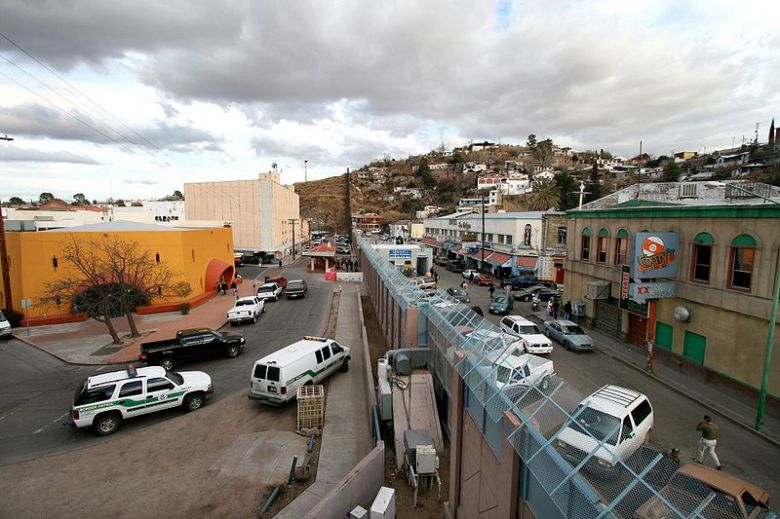By Jillian Smith, University of Birmingham

We have all heard it: “I will build a great wall – and nobody builds walls better than me, believe me – and I’ll build them very inexpensively – I will build a great, great wall on our southern border, and I will make Mexico pay for that wall. Mark my words.” Trump’s words from 2015 are once again making headlines and the proposed wall is forcing society to pose some tough questions. Are walls a knee-jerk protectionist response? How is globalisation implicated? Do walls work?
The Great Wall of China, the Western Wall, Hadrian’s Wall, and several more – there is a certain degree of romanticism invoked that somehow makes us believe that protectionist ‘walls’ are from a bygone era. Nevertheless, it is certainly not difficult for many of us to remember the celebratory tone when East Germans reunited with West Germans as the Berlin Wall was joyously torn down. Perhaps it is this nostalgia that makes so many reel in repulsion as they ponder Trump’s USA-Mexico border wall?
Romanticism and nostalgia aside, walls are not archaic. Walls have actually become rather trendy. Austria, Bulgaria, Estonia, Hungary, Kenya, Saudi Arabia, and Tunisia all announced new walls in 2015 (Jones, 2016). Additionally, in 2016, Norway and Pakistan announced plans to fence off Russia and Afghanistan respectively (Jones, 2016). In fact, there were 15 documented walls in the world in 1989; there were 70 in 2015 (Vallet, 2016).
But do they work? Certainly, walls and fences can serve a purpose: When refugees flood Europe, fences can provide temporary relief to host nations; when warring factions enter peace talks, fences can cordon off cease-fire zones. In these cases, and others, fences are temporary and justifiable. In other cases, walls can antagonize relations, stifle trade, and increase disruption along borders. For example: the UN has declared that Israel’s construction of the West Bank Wall has fuelled tensions with Palestine; a 717 percent increase in illegal arrivals was reported in Bulgaria despite Bulgaria-Turkey border fencing; Calais refugees are desperately jumping lorries in attempts to illegally enter the United Kingdom (Danish Refugee Council, 2016; United Nations, 2016).
Meanwhile, heavily-guarded walls and fencing have been successful in stopping movement between the USA and Mexico (as observed in the 1990s when the USA reinforced border security near San Diego and El Paso). Many, however, would argue that these reinforcements have not stopped flow; rather, they have shifted flows, increased migrant deaths, and expanded tunnel systems (Cornelius, 2001; Meissner et al., 2013). In this case, a border wall has, perhaps, managed perceptions more than migration. In other words, barriers can stem the flow, but desperate people are persistent and resourceful; they will find other means. The colloquial elephant in the room remains – as long as vast inequality exists in society, there will inevitably be a flow of people. Until these bigger societal problems are addressed, migration and immigration will occur.
Once upon a time, it seemed that globalisation might spur somewhat of a border-less, wall-less world. With the reality of Brexit and President Trump, however, we can expect more, not fewer, protectionist policies. Notions of territorial organisation are becoming more and more relevant as 2017 unfolds. While migration and trade highlight interdependence, borders still play a significant role in shaping societies and economies (Diener & Hagen, 2009). History can not tell us to build up or tear down a wall, but history can teach us some valuable lessons. In the meantime, the legacy of an impending USA-Mexico Wall remains to be seen – the world is waiting with bated breath.
Featured image: Max Bohme / Unsplash
References
![]() Cornelius, W. (2001). Death at the border: Efficacy and unintended consequences of US immigration control policy. Population and Development Review, 27: 661–685. doi: 10.1111/j.1728-4457.2001.00661.x
Cornelius, W. (2001). Death at the border: Efficacy and unintended consequences of US immigration control policy. Population and Development Review, 27: 661–685. doi: 10.1111/j.1728-4457.2001.00661.x
 Danish Refugee Council. (2016). Tightening borders, dangerous journeys, and shifting routes to Europe: Summary of regional migration trends, Middle East. Retrieved from: https://drc.dk/media/2885691/drc-middle-east-regional-migration-trends-august-september.pdf
Danish Refugee Council. (2016). Tightening borders, dangerous journeys, and shifting routes to Europe: Summary of regional migration trends, Middle East. Retrieved from: https://drc.dk/media/2885691/drc-middle-east-regional-migration-trends-august-september.pdf
![]() Diener, A. C., Hagen, J. (2009). Theorizing borders in a ‘Borderless World’: Globalization, territory and identity. Geography Compass, 3: 1196–1216. doi:10.1111/j.1749-8198.2009.00230.x
Diener, A. C., Hagen, J. (2009). Theorizing borders in a ‘Borderless World’: Globalization, territory and identity. Geography Compass, 3: 1196–1216. doi:10.1111/j.1749-8198.2009.00230.x
 Meissner, D., Kerwin, D., Chishti, M., & Bergeron, C. (2013). Immigration Enforcement in the United States: The Rise of a Formidable Machinery. Retrieved from Migration Policy Institute: http://www.migrationpolicy.org/research/immigration-enforcement-united-states-rise-formidable-machinery
Meissner, D., Kerwin, D., Chishti, M., & Bergeron, C. (2013). Immigration Enforcement in the United States: The Rise of a Formidable Machinery. Retrieved from Migration Policy Institute: http://www.migrationpolicy.org/research/immigration-enforcement-united-states-rise-formidable-machinery
 United Nations. (2014). Ban says Israel’s construction of West Bank wall violates international law, fuels Mid-East tensions. Retrieved from UN News Centre: http://www.un.org/apps/news/story.asp?NewsID=48236#.WIu0ihiZMhu
United Nations. (2014). Ban says Israel’s construction of West Bank wall violates international law, fuels Mid-East tensions. Retrieved from UN News Centre: http://www.un.org/apps/news/story.asp?NewsID=48236#.WIu0ihiZMhu
![]() Vallet, E. (Ed.). (2014). Borders, fences and walls: State of insecurity? Border Regions Series. Surrey, UK and Burlington, VT: Ashgate Publishing
Vallet, E. (Ed.). (2014). Borders, fences and walls: State of insecurity? Border Regions Series. Surrey, UK and Burlington, VT: Ashgate Publishing


My apologies for the omission.
Jones, R. (2016). Borders and walls: Do barriers deter unauthorized migration. Retrieved from Migration Policy Institute: http://www.migrationpolicy.org/article/borders-and-walls-do-barriers-deter-unauthorized-migration
Thank you for the info of the sources. I considered your essay with my students, and we had a very interesting discussion about it.
I am very pleased to hear that you and your students found the post useful! Thanks for sharing that with me.